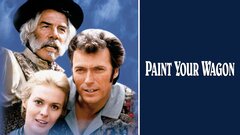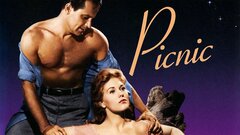Primarily a man of the theater, Joshua Logan fashioned a brilliant career as a writer, producer and director and was that uncommon phenomenon, the theatrical director whose success extended into films. He was also notable for his candor in discussing manic depression, a condition for which he required hospitalization on two occasions before discovering he could control it with the drug lithium carbonate. When discussing his illness, he made it quite clear that its manic phase contributed to his creativity: "Without my illness . . . I would have missed the sharpest, rarest and, yes, the sweetest moments of my existence."
Logan entered Princeton University in 1927 because of its Triangle Club that toured the country and became its president during his senior year. He co-wrote and acted in the annual university reviews from 1928-30 but did not graduate, leaving instead to study on scholarship with Stanislavsky and the Moscow Arts Theatre. During his collegiate days, he co-founded with Bretaigne Windust the University Players, a summer stock group (in Cape Cod) that would launch the careers of Henry Fonda, Margaret Sullavan and Jimmy Stewart.
On his return from Moscow, he joined the University Players for a repertory season in Baltimore, directing "Mary Rose" and "Lysistrata," and made his Broadway acting debut as Mart Strong in their disastrous "Carry Nation" (1932), which led to the company's disbanding. Beginning as a sixth assistant stage manager on Broadway's "She Loves Me Not" (1933), he rose rapidly to first assistant stage manager on various productions before making his Broadway directorial debut with "To See Ourselves" (1935). Following two separate stints as a Hollywood dialogue director sandwiched around a NYC performance in a revival of "What Price Glory?," he entered a period of prolific output that would lead to a nervous breakdown in 1940.
His first real recognition came in 1938 prior to his hospitalization for his direction of "On Borrowed Time" and "I Married an Angel," the latter beginning his association with Richard Rodgers. After serving as a public relations and intelligence officer in World War II, he directed "Annie Get Your Gun" (1946) and for the next fifteen years enjoyed his greatest success. "Mister Roberts" (1948) brought him two Tony awards for Best Play and Best Authors, which he shared with co-writer Thomas Heggen, and he garnered perhaps his greatest acclaim for "South Pacific" (1950), though the experience was not without its bitter moments. THE NEW YORK TIMES initially omitted him as co-author in their early rave reviews, and the Pulitzer Prize committee repeated the mistake by awarding the coveted prize for drama in 1950 to Richard Rodgers and Oscar Hammerstein II only before correcting their error.
In connection with "South Pacific," he also won the Tony for Best Director (1950) and shared both a New York Drama Critics Award for Best Musical (1948/49) and a Tony for Best Producers/Musical (1950). He received another Tony as Best Director of "Picnic" (1953) and a Golden Globe Award as Best Director (1955) for bringing the Inge play to life on screen. Though he coaxed the very best out of Marilyn Monroe in "Bus Stop" (1956), scored big with "Sayonara" (1957) and presented a good comedy in "Tall Story" (1960), he was less successful in his direction of movie musicals. "South Pacific" (1958), "Camelot" (1967) and "Paint Your Wagon" (1969), dismal, inert versions of great stage shows, are so depressing that they offer an oblique reminder that Logan was, at the other end of his mania, a famous depressive.





















